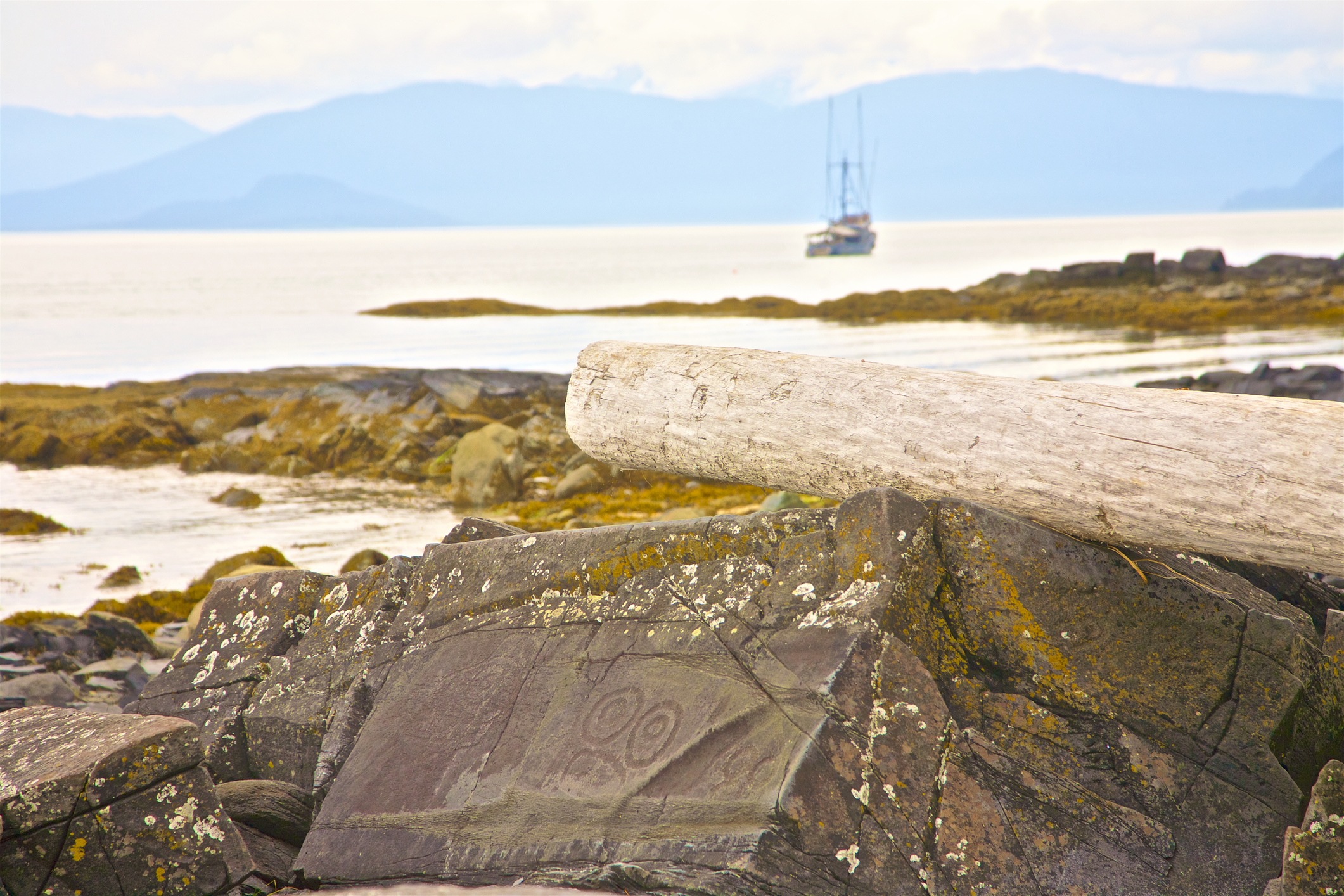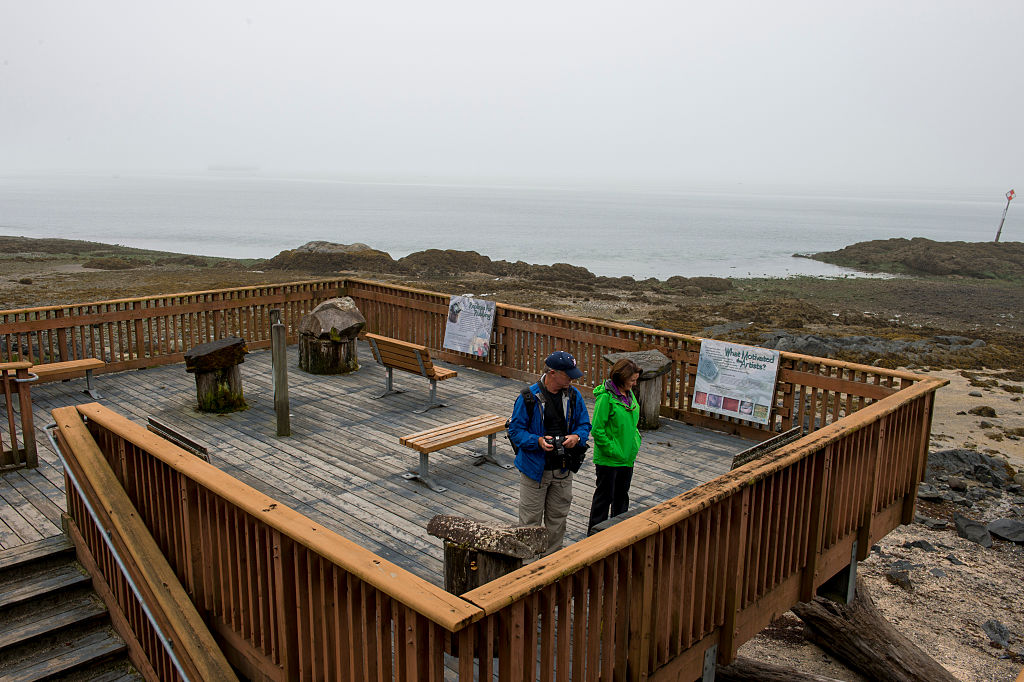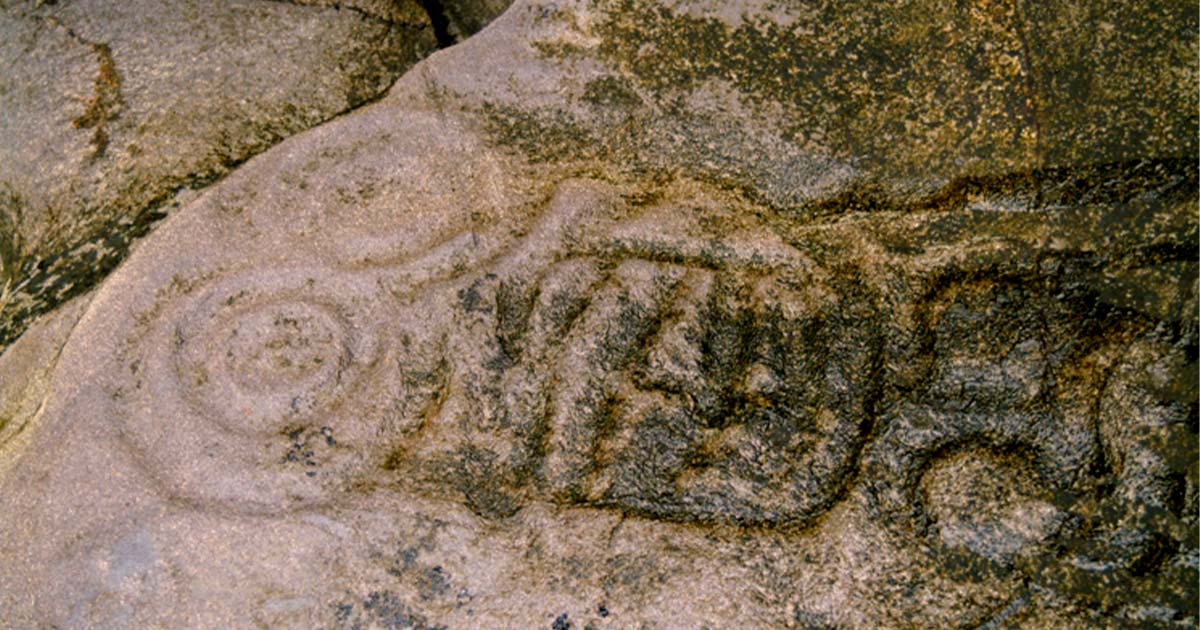Anthropology
Related: About this forumThe Mystery of This Petroglyph-Covered Alaskan Beach
The 8,000-year-old rock carvings were likely created by the Tlingit
Jennifer Nalewicki
March 22, 2023

The rocky beach in Wrangell, Alaska, is decorated with more than 40 petroglyphs. Barry Winiker/Getty Images
Water laps gently against the rocky shores of Petroglyph Beach State Historic Site in Wrangell, an island town that’s part of Alaska’s Inside Passage, an archipelago that drips like a chain of pearls along the state’s southeast coast. I have to watch my footing as I amble along the beach, dodging thousands of craggy rocks that are beginning to poke up out of the sand.
It’s a sunny summer morning in late August, and the tide has already gone out for the day, exposing a rocky wonderland ripe for exploration. Unlike at most beaches, where people go to comb for seashells or sea glass, here I’m on the hunt for the dozens of petroglyphs that pepper the coastline’s boulders and bedrock. (The word petroglyph is derived from the Greek words petra and glyph, which translate to “rock” and “carving.”)
While there are numerous hypotheses about the origins of the more than 40 rock carvings etched here—one of the highest known concentrations of petroglyphs in Alaska and around the world—the one most often agreed upon by archaeologists is that they were etched roughly 8,000 years ago by the Tlingit (pronounced CLINK-it), an Alaska Native group that continues to inhabit the state’s southeastern archipelago. But when it comes to the petroglyphs’ intended purpose, that’s where things remain a mystery.

Visitors look at an interpretive display at Petroglyph Beach State Historic Park. Wolfgang Kaehler/LightRocket via Getty Images
According to a placard at the beach’s entry, the petroglyphs may have served any number of purposes, including being territorial markers to warn enemies that they were encroaching on settled land, a historical record commemorating a significant event such as a battle or an epic tidal wave that happened here, or underwater beacons to help coax salmon to swim to the mouths of the rivers and streams that feed into the Inside Passage straits. Others believe the drawings mark an important fishing site or settlement.
More:
https://www.smithsonianmag.com/travel/the-mystery-of-this-petroglyph-covered-alaskan-beach-180981858/
~ ~ ~

The wild and enigmatic northern regions of North America have always been a place of great mystery. The wild beauty of Alaska, of Canada’s vast northern provinces, and their tranquil coastal areas, always captivated the attention of explorers and adventurers. History here is rich too, with many venerated native tribes leaving their important mark on the land. But one historic remnant did stir the imagination of scholars, and proved to be a bit of an enigma. The so-called Petroglyph Beach at Alaska’s city of Wrangell is an intriguing insight into the oldest traces of human habitation in the area. What is more, it has one of the highest concentrations of intricate rock carvings in North America - and in the world too. Who left these marks, and why?
The Enigma of the Petroglyph Beach in Wrangell
Wrangell, located along the important Inside Passage coastal route, is a small and tranquil coastal fishing city in Alaska. Before the European settlers arrived, the area had been the home of the Tlingit native tribe for thousands of years and their identity is still strong in this region. This is an area of exceptional beauty, with some of the last true wilderness left in the world. With rugged mountains and lush boreal forests, rocky peaches and crowded archipelagos, this coastal area of Alaska is captivating with its primal beauty.
- video at link -
Tlingit native tribe for thousands of years and their identity is still strong in this region. This is an area of exceptional beauty, with some of the last true wilderness left in the world. With rugged mountains and lush boreal forests, rocky peaches and crowded archipelagos, this coastal area of Alaska is captivating with its primal beauty.
Wrangell, however, is a simple town of some 2,500 inhabitants, centered on its traditional fishing industry. Yet it hides something quite unique. Just a mile out of town, after a pleasant hike, one can stumble upon the enigmatic Petroglyph Beach, the coast whose jagged rocks are dotted with numerous intricate stone carvings. Easily spotted above and below the mean high tide, these carvings vary from simple and crude, to detailed and captivating. A petroglyph is a carving made in stone, and it is one of the oldest forms of expression, found all across the world.
More:
https://www.ancient-origins.net/artifacts-other-artifacts/petroglyph-beach-0018343
SWBTATTReg
(22,143 posts)Easterncedar
(2,298 posts)Amazing!!